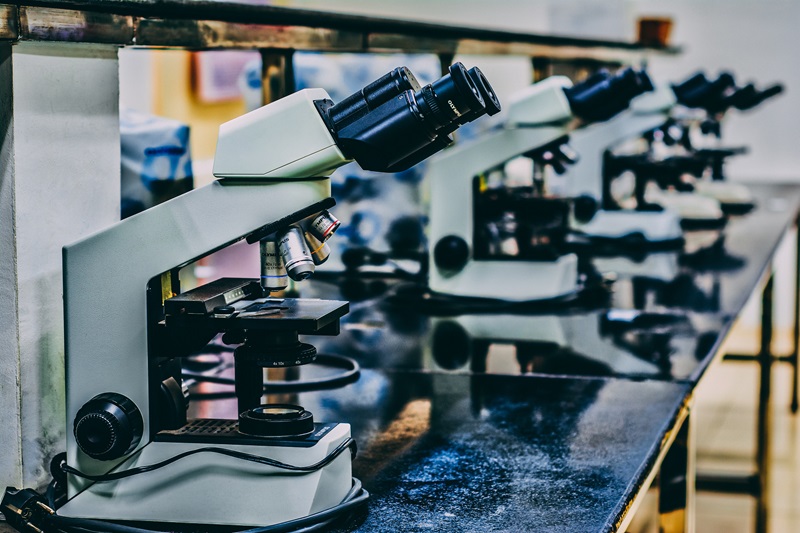
Introduction
Flow cytometry has been a powerful technique in biomedical research, allowing scientists to analyze and characterize individual cells within complex populations. However, traditional flow cytometry has limitations in resolving small particles and particles in close proximity. Enter nano-flow cytometry, a cutting-edge technology that enables the analysis of nanoparticles and single cells with unprecedented precision and sensitivity. In this blog, we will explore the principles, applications, and future prospects of nano-flow cytometry in unraveling the mysteries of cellular heterogeneity.
Understanding Nano-Flow Cytometry
Nano flow cytometry is an advanced technique that combines traditional flow cytometry principles with nanotechnology and microfluidics. It overcomes the limitations of conventional flow cytometry by using high-resolution optics, sensitive detectors, and miniaturized fluidic systems, allowing the analysis of submicron-sized particles, such as extracellular vesicles and nanoparticles, as well as single cells.
Principles of Nano-Flow Cytometry
Nano-flow cytometry relies on several principles to achieve high-resolution analysis:
Optical System: Nano-flow cytometers utilize state-of-the-art optics, including multiple lasers and detectors with high sensitivity and resolution. This enables the detection of fluorescence signals emitted from nanoparticles or single cells with exceptional accuracy.
Microfluidics: Nano-flow cytometers employ microfluidic channels, where particles or cells are hydrodynamically focused into a thin stream. This ensures single-particle interrogation and reduces background noise, allowing for precise analysis.
Signal Detection: The sensitivity of nano-flow cytometry lies in the detectors used to capture the emitted fluorescence signals. Advanced photomultiplier tubes (PMTs), avalanche photodiodes (APDs), or complementary metal-oxide-semiconductor (CMOS) detectors enhance the detection capabilities of the system, enabling the analysis of weak signals from small particles or dimly stained cells.
Applications of Nano-Flow Cytometry
Extracellular Vesicle (EV) Analysis: Nano-flow cytometry has revolutionized the study of EVs, small membrane-bound particles released by cells that play a critical role in cell-to-cell communication. Nano-flow cytometry allows researchers to analyze EVs and distinguish them based on size, surface markers, and cargo content, providing insights into their functional roles in various pathological conditions, such as cancer and immune disorders.
Nanoparticle Analysis: With the rise of nanotechnology, nano-flow cytometry has become essential in characterizing engineered nanoparticles and understanding their interactions with biological systems. It enables the precise measurement of nanoparticle size, surface charge, and molecular composition, facilitating the optimization of nanoparticle-based therapies and diagnostics.
Single-Cell Analysis: Nano-flow cytometry offers unprecedented resolution for studying cellular heterogeneity at the single-cell level. It unlocks the ability to analyze various parameters, such as gene expression, protein levels, and cellular morphology, in individual cells within a heterogeneous population. This capability is instrumental in advancing fields such as immunology, stem cell research, and cancer biology.
Future Prospects and Conclusion
Nano-flow cytometry is a rapidly evolving field with vast potential for further advancements. Future developments may involve the integration of additional functionalities, such as cell sorting or imaging, within nano-flow cytometry platforms. Furthermore, the combination of nano-flow cytometry with other complementary techniques, such as single-cell genomics and proteomics, will offer a more comprehensive understanding of cellular behavior and function.
In conclusion, nano-flow cytometry is at the forefront of single-cell analysis, enabling researchers to delve deeper into the intricacies of cellular heterogeneity and nanoscale particles. Its high-resolution capabilities, coupled with the flexibility of analysis, open up new avenues for studying diseases, developing targeted therapeutics, and optimizing nanomedicine. As this technology continues to evolve, expect remarkable breakthroughs in our understanding of complex biological systems, driving advancements in precision medicine and personalized therapies.




